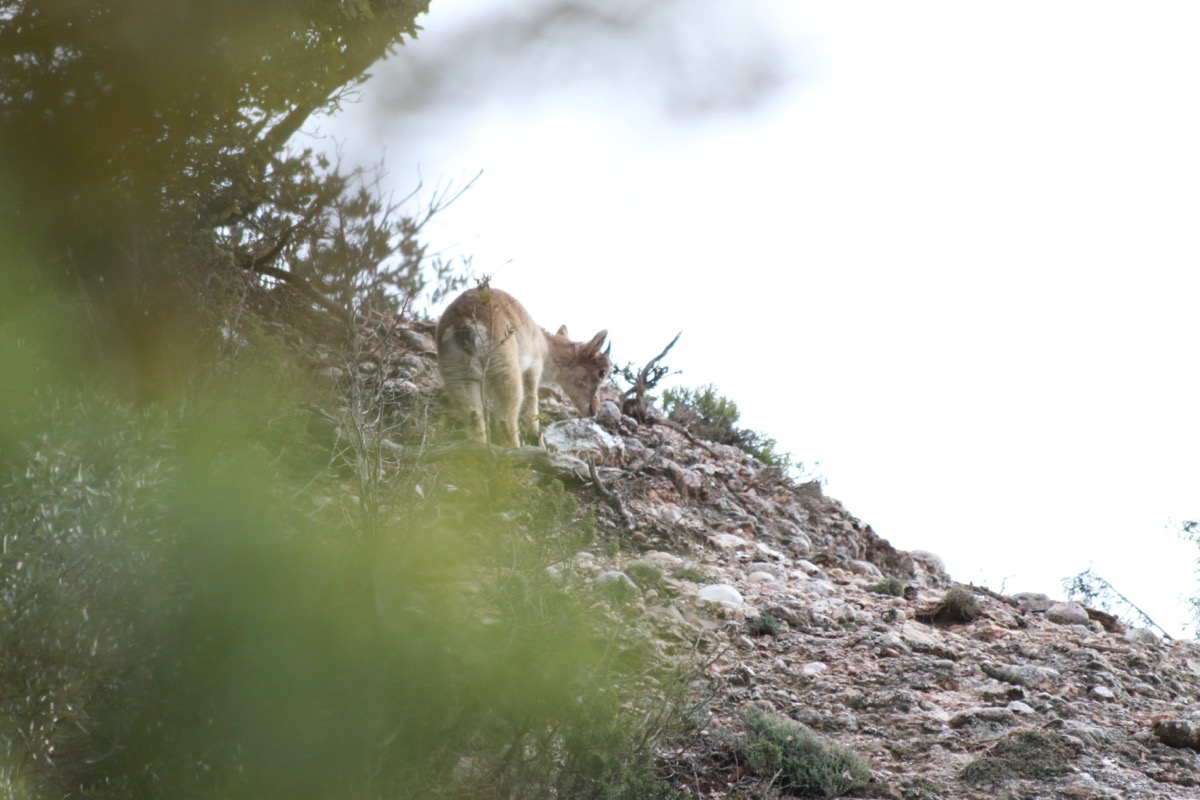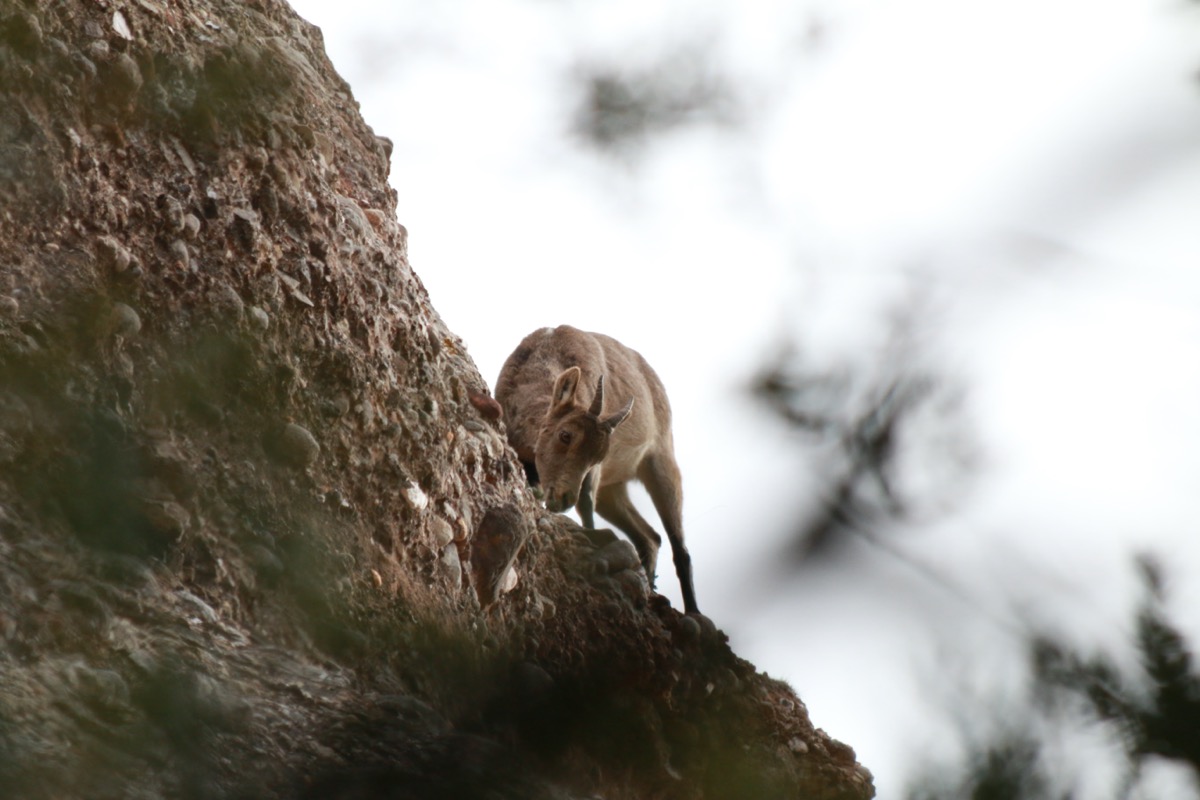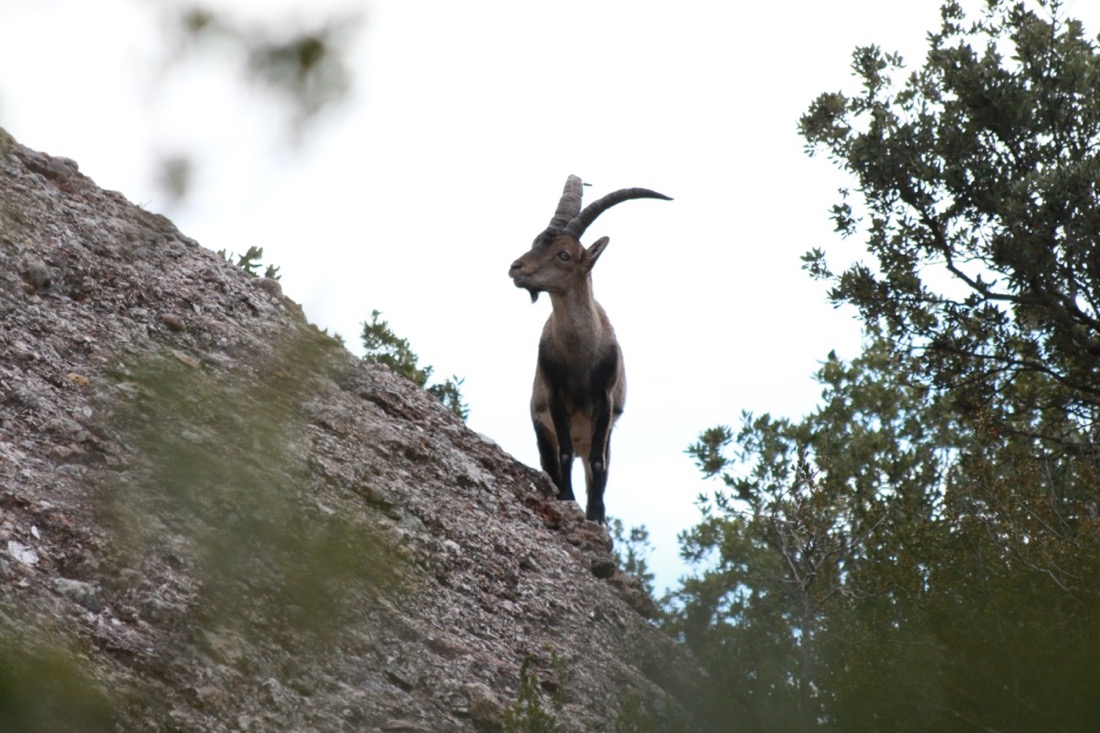Iberian ibex in the rocks

A young calf in a rocky zone.
The rocky walls of Montserrat are an ideal setting for the iberian ibex, excellent climber and climber. You can move around practically vertical rock walls. From its early stages of life, it is already able to move skillfully through this environment, where predators have a difficult time reaching them. It is amazing to see the ease with which they move through the steepest rocks. Even so, they can occasionally suffer fatal accidents ( as landslides as the most common cause), most often occurring in large males. Of the ungulate mammals in Europe, it is best adapted (along with its brother the alpine ibex) to this type of terrain, followed closely by the rebeco and further away by the mouflon.

Female eating grass on a rock wall.
They take advantage of the security that rocky places give them, to take refuge, rest, feed, woo and relate to each other (such as disputes between males in the mating season). For most of the people, the most characteristic image of this species is to see it leaning out of a rocky rock.

Male watching over the rocky.
Tags: cabra montes, cabra iberica, iberian ibex, montserrat, collbatomontserratnatural.com @Copyright 2020
Privacy Config